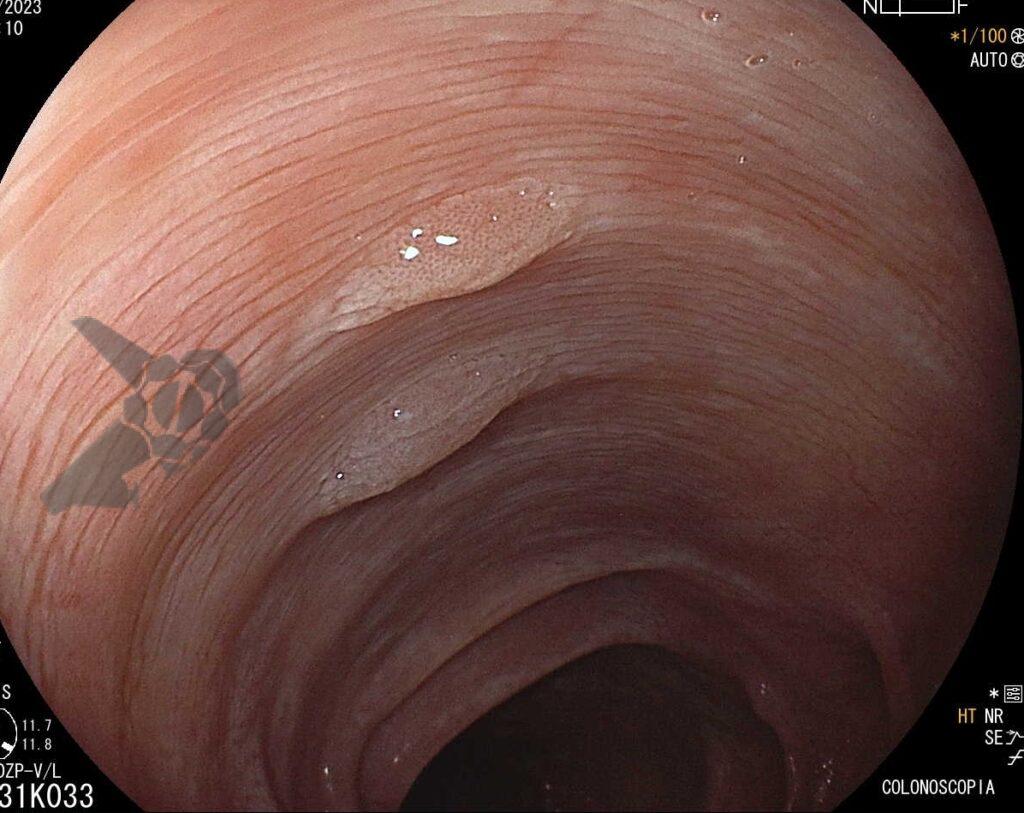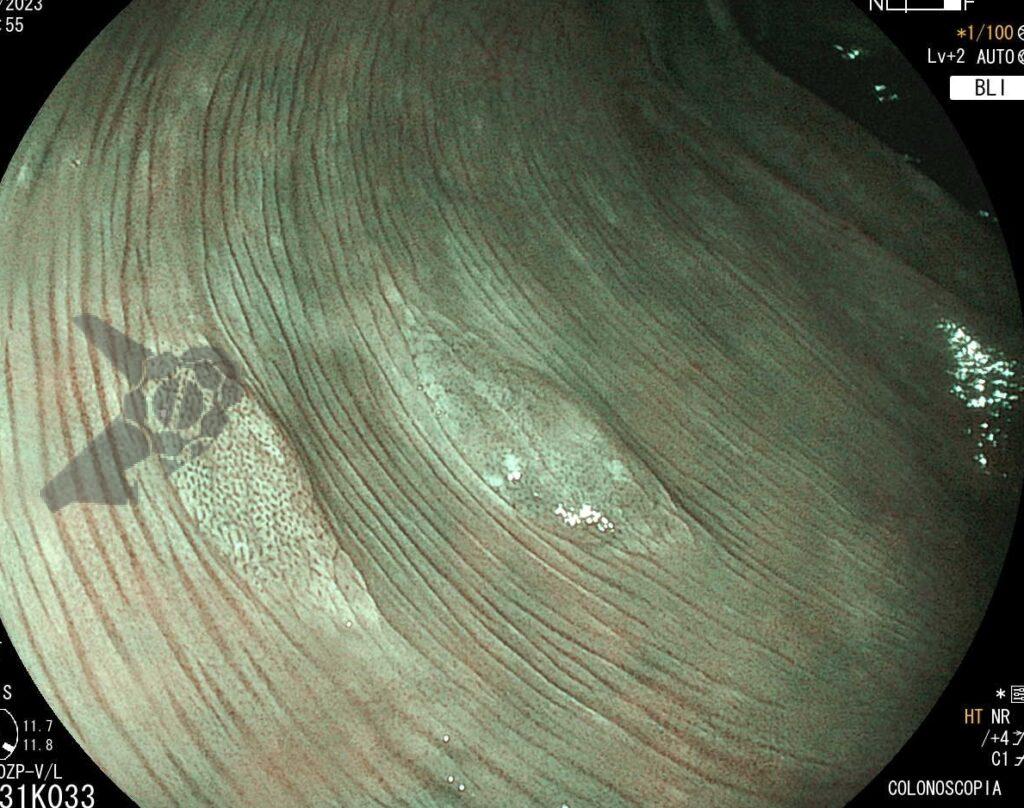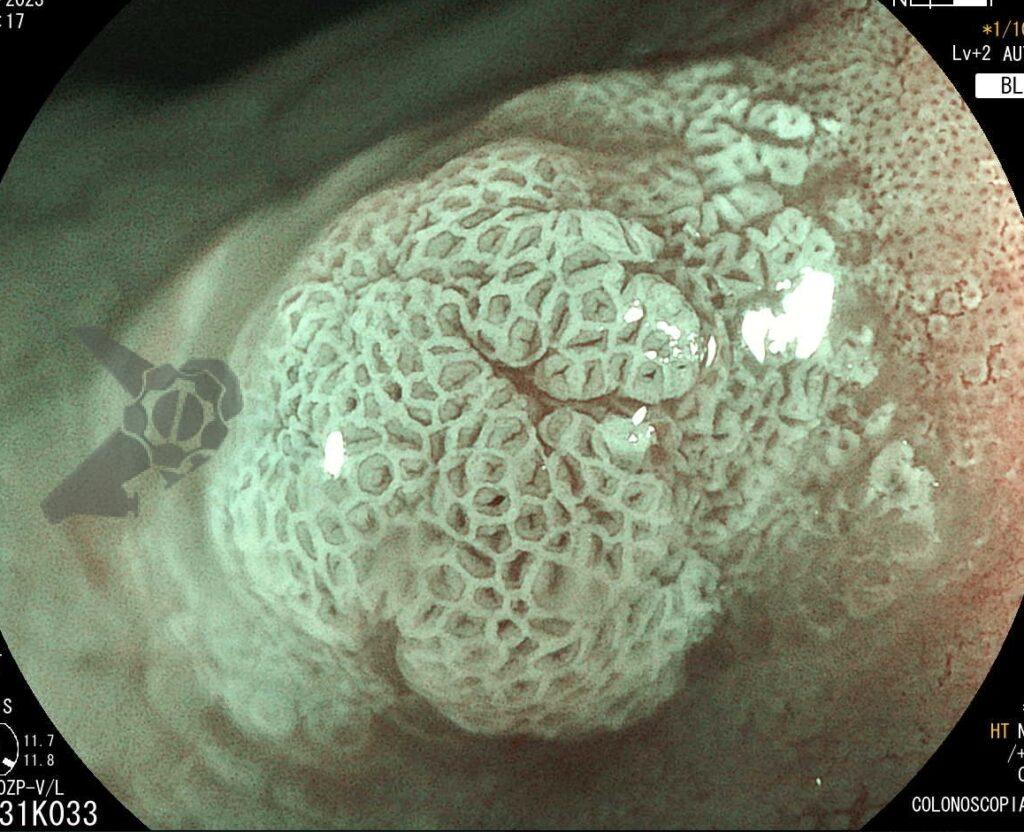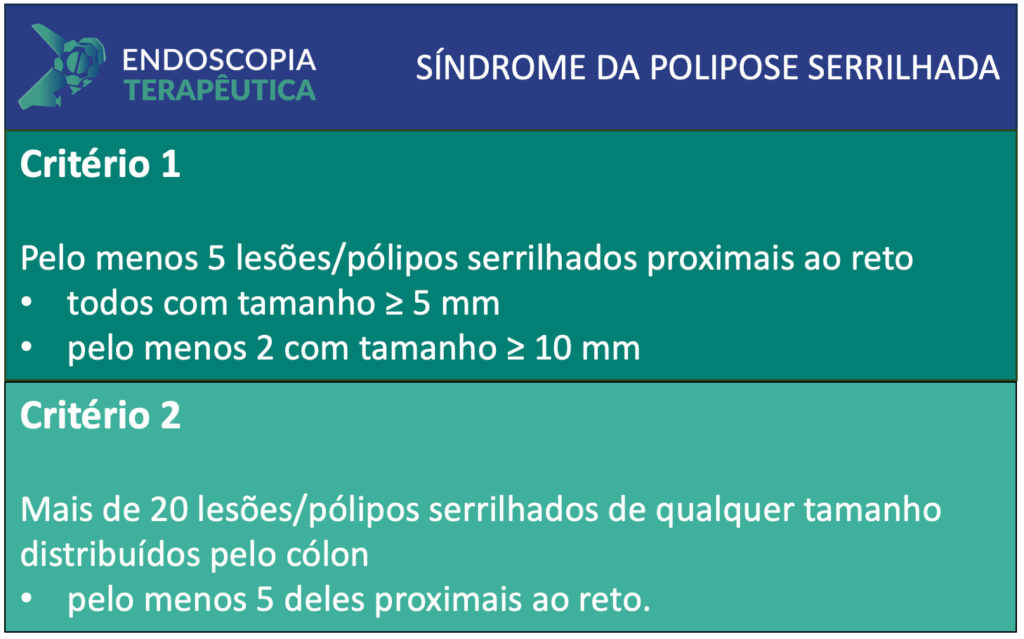The sessile serrated lesion (SSL) is the new term for lesions previously called sessile serrated adenoma (SSA) and SSL with dysplasia is the term used for lesions previously called SSA with dysplasia. A detailed review of serrated lesions can be found in this other article.
Based on this, Serrated Polyposis Syndrome (SPS) is a rare condition characterized by multiple colorectal serrated lesions and increased risk of colorectal cancer.
- The prevalence varies from 0.03% to 0.5% in patients undergoing colonoscopy.
- The diagnosis usually occurs between 50-55 years, although it ranges from 20-70 years.
- Similar prevalence in men and women.
Click here to learn about other colorectal polyposis syndromes.
Updated Criteria for Serrated Polyposis:
Compared to the previous edition, the WHO in 2019 updated the diagnostic criteria, keeping only 2 of the 3 clinical criteria for the definition of SPS:
- Criterion: At least 5 serrated lesions/polyps proximal to the rectum, all measuring ? 5 mm, with at least 2 measuring ? 10 mm.
- Criterion: More than 20 serrated lesions/polyps of any size distributed throughout the colon, with at least 5 of them proximal to the rectum.
- Patients who meet at least one criterion are diagnosed with serrated polyposis.
- All subtypes of serrated polyps (sessile serrated lesion, hyperplastic polyp, traditional serrated adenoma, unclassified serrated adenoma) are included in the count.
- The count is cumulative over several colonoscopies.
- Studies report a cancer risk between 15–30% in patients with SPS, varying according to age, polyp phenotype, and high-risk histological features.
- Rigorous endoscopic surveillance (annual colonoscopy) is recommended.
- More recent studies have shown that most patients have endoscopic control with a reduction in the number and size of polyps after 2-3 annual colonoscopies, suggesting spacing the surveillance interval to 2 years after this initial stage [1].




Summary of Changes:

Reference
- MacPhail M.E., Thygesen S.B., Patel N., Broadley H.M., Rex D.K. Endoscopic control of polyp burden and expansion of surveillance intervals in serrated polyposis syndrome. Gastrointest. Endosc. 2019;90:96–100. doi: 10.1016/j.gie.2018.11.016.
How to cite this article
Martins BC and Tanigawa R. Serrated Polyposis Syndrome (SPS). Endoscopia Terapeutica, 2024 vol. 1. Available at: https://endoscopiaterapeutica.com.br/assuntosgerais/sindrome-de-polipose-serrilhada-sps/
Professor Livre-Docente pela Faculdade de Medicina da Universidade de São Paulo
Médico Endoscopista do Instituto do Câncer do Estado de São Paulo (ICESP)
Médico Endoscopista do Hospital Alemão Oswaldo Cruz
Emerging Star pela WEO
